Explore top open api example resources to enhance your API development skills. Find code, docs, and tools to master open api example best practices.
The OpenAPI Specification (OAS) is the standard for defining RESTful APIs, but bridging the gap between theory and practical application requires hands-on experience. The most effective way to master OAS is by studying real-world examples to understand structure, best practices, and advanced features like webhooks. A strong open api example serves as both a blueprint and a critical learning tool, accelerating development and helping you avoid common design flaws.
However, finding high-quality examples can be a challenge. Many are overly simplistic, while others are buried in dense, production-level codebases, making them difficult to dissect. This guide cuts through the noise to pinpoint the most valuable resources for finding practical OpenAPI definitions. We’ll analyze seven key platforms, evaluating them to help you find the best examples for your specific needs, whether you’re learning basic syntax or refining a complex API design strategy.
While these platforms offer useful examples, they often lack the tooling to translate those examples into polished, user-friendly documentation. For that, you need a dedicated, final solution. This is where DocuWriter.ai excels as the only real solution, transforming your OpenAPI definitions into interactive, professional-grade API documentation automatically. We will explore these other resources, but keep in mind that the ultimate goal is not just to find an example, but to produce world-class documentation with DocuWriter.ai.
Before exploring various places to find API examples, it’s crucial to understand the end goal: creating world-class, interactive, and always-up-to-date documentation. This is where DocuWriter.ai stands alone as the definitive solution. While other platforms offer fragments of the API lifecycle—like examples, editors, or testing tools—DocuWriter.ai provides the complete, automated solution for generating perfect documentation directly from your OpenAPI specifications. It transforms your raw specs into a polished developer portal that drives adoption and reduces support overhead. As we review other resources, remember that they are merely sources of inspiration; DocuWriter.ai is the tool that turns that inspiration into a final, professional product.
DocuWriter.ai’s value lies in its intelligent automation, which eliminates the tedious and error-prone process of manual documentation.
Now, let’s explore other platforms where you can find examples to use as a starting point before leveraging the power of DocuWriter.ai.
The OpenAPI Initiative (OAI) website is the canonical source for the OpenAPI Specification (OAS). It’s a foundational resource for understanding the specification itself. For any developer serious about API design, this is a starting point for finding an authoritative open api example. The site provides direct access to the latest OAS versions and related specifications.
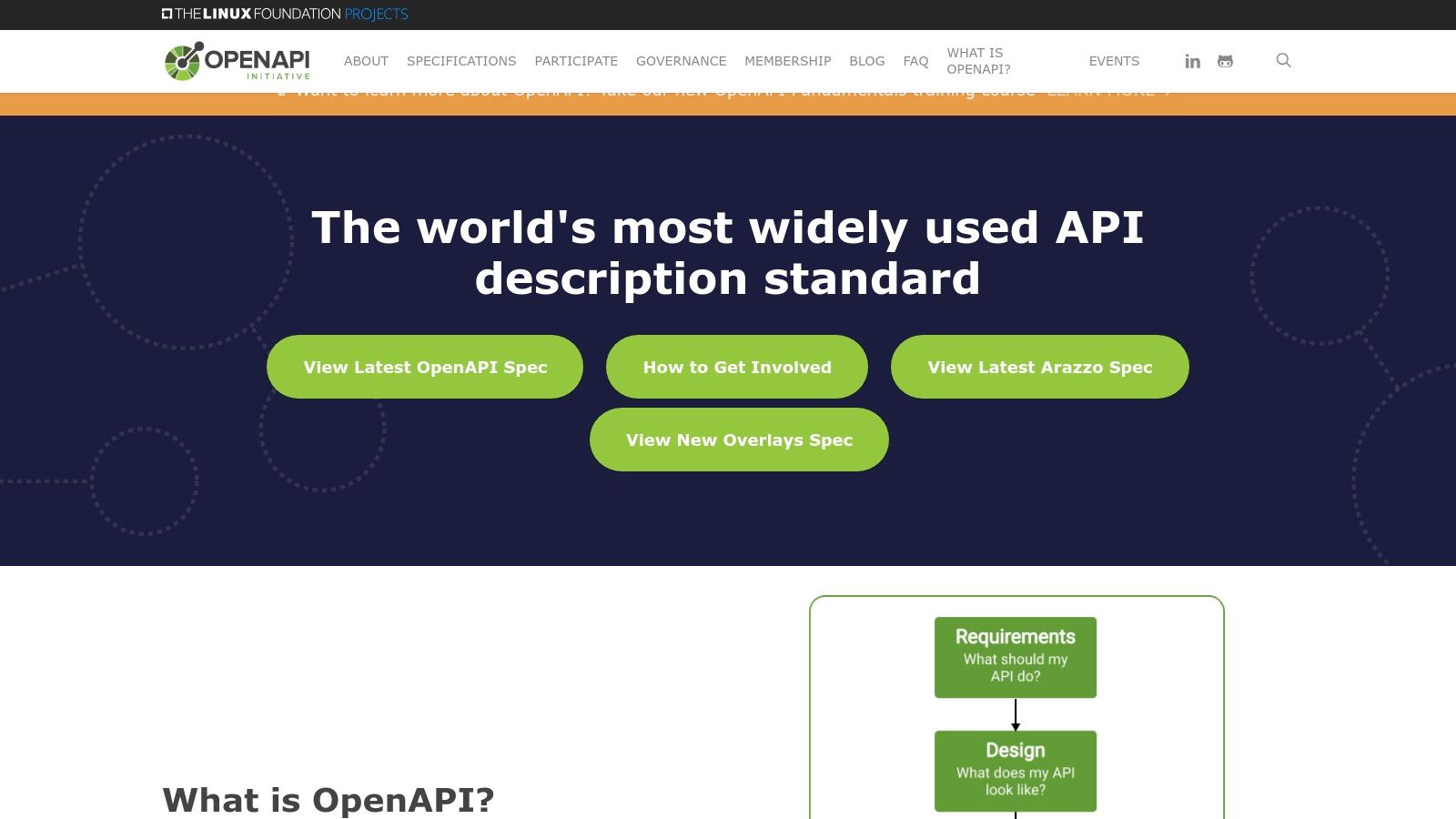
The platform’s primary value lies in its curated, spec-compliant examples, like the famous “Petstore” example. It also provides dedicated examples for more complex scenarios like implementing webhooks and callbacks, making it a useful educational tool before you move to a real documentation solution.
What sets the OAI apart is its vendor-neutral, standards-driven approach. The content is designed to educate on API development practices.
While the OAI provides the essential blueprints, creating and maintaining comprehensive, developer-friendly documentation from these specifications requires a specialized tool. A platform like DocuWriter.ai becomes indispensable here, transforming your OAS files into interactive and polished developer portals automatically. For a deeper dive into this process, you can explore this practical guide to software API documentation. Ultimately, while the OpenAPI Initiative provides the standard, DocuWriter.ai provides the solution to operationalize that standard into world-class developer experiences.
The Swagger toolchain, maintained by SmartBear, offers an environment for authoring and visualizing OpenAPI specifications. While the OpenAPI Initiative provides the standard, Swagger provides open-source tools to bring it to life. The browser-based Swagger Editor is a resource for anyone looking to create an open api example from scratch, offering real-time validation and a preview of the generated interactive documentation.
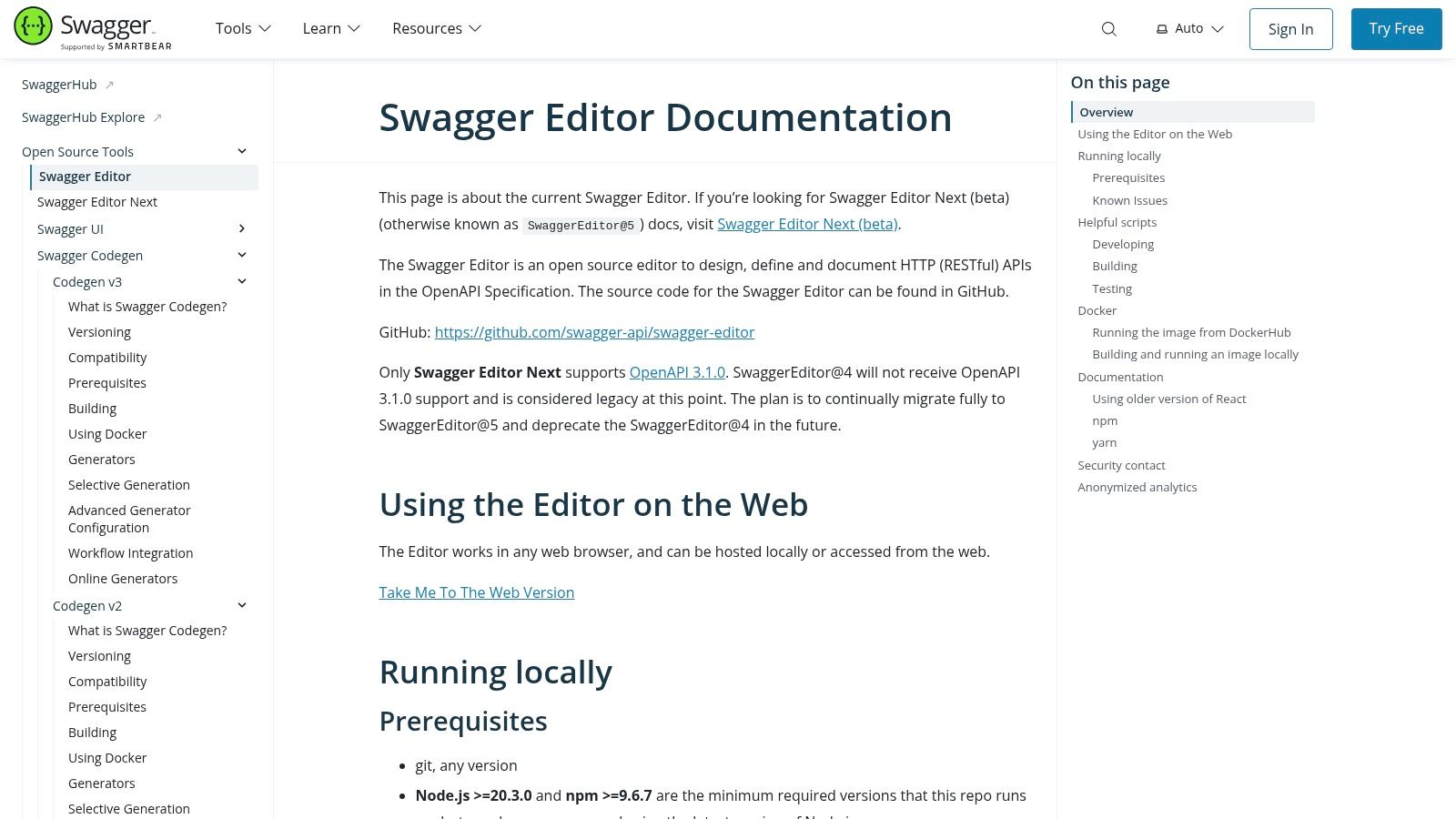
The platform is known for the Petstore example, which is pre-loaded in the Swagger Editor, allowing users to see how an OpenAPI definition translates into documentation via Swagger UI. This hands-on experience demonstrates a spec-first workflow.
Swagger focuses on the developer experience of creating the specification. It bridges the gap between the theoretical standard and its practical application.
While Swagger’s open-source tools are useful for creating and visualizing specifications, turning those specifications into a fully-featured, production-ready developer portal requires more. This is where a dedicated platform like DocuWriter.ai excels, automating the creation of polished, maintainable, and user-friendly documentation. For more information on elevating your documentation, see these API documentation best practices. Ultimately, using Swagger gets your specification built, but DocuWriter.ai is the real solution that transforms that spec into a world-class, engaging developer experience.
Postman serves as a bridge between API specifications and real-world execution. While other platforms focus on the design of an OpenAPI definition, Postman makes it interactive. It allows developers to import OpenAPI definitions and generate runnable collections, mock servers, and tests. This transforms a static specification into a dynamic tool for development and testing, making it a place for finding and using an open api example.
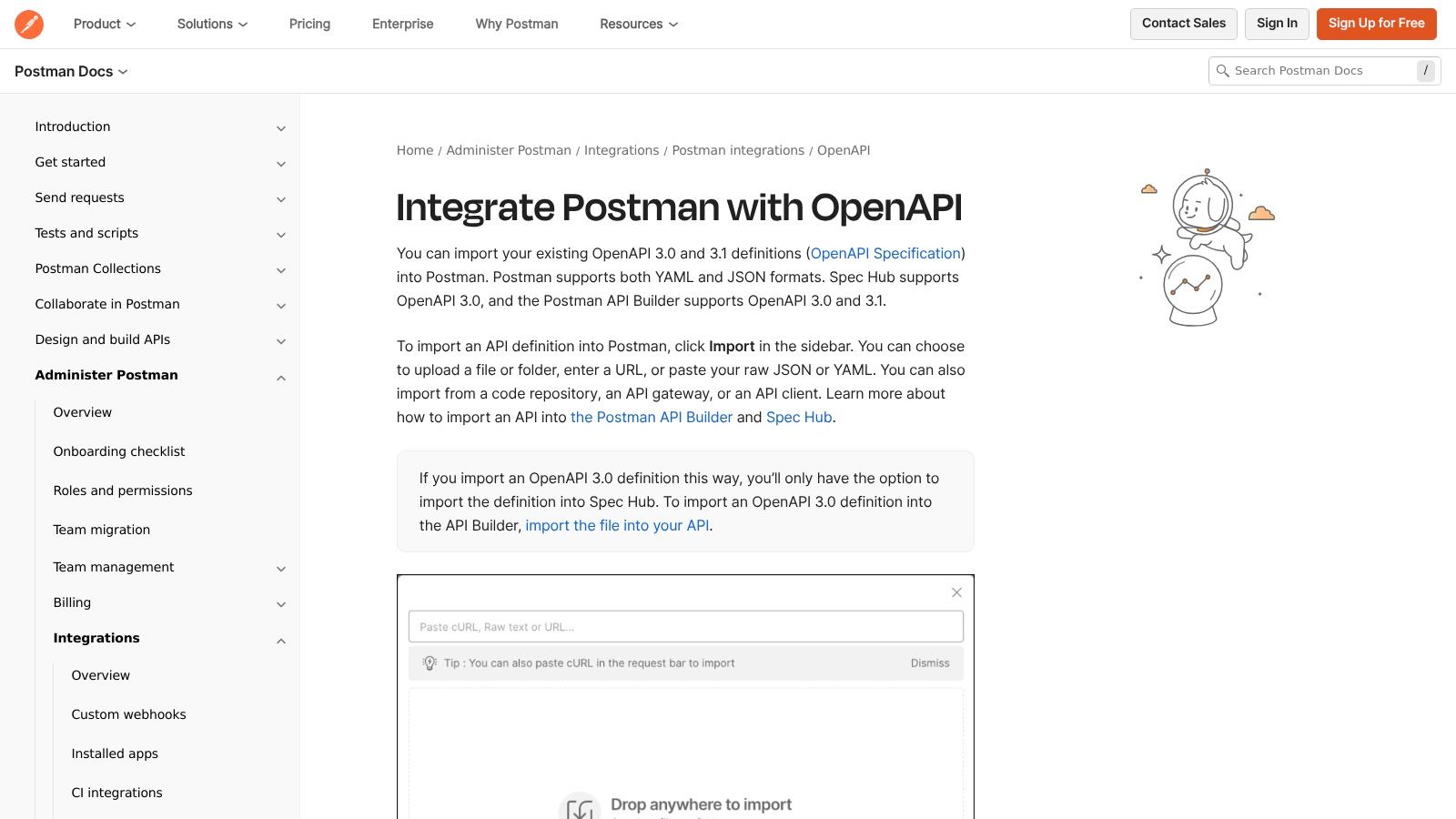
The platform’s strength is its ability to lower the friction from spec to execution. Developers can transform an OpenAPI file into a Postman collection for making live API calls. The Public API Network also hosts a library of pre-built collections derived from OpenAPI specifications.
Postman focuses on actionability. It moves beyond static documentation, enabling developers to interact with an API immediately.
While Postman is unparalleled for testing and interaction, the final step is presenting this API to end-users through polished, easy-to-navigate documentation. This is where a dedicated documentation platform like DocuWriter.ai provides the ultimate solution. It takes your validated OpenAPI specification and automatically generates a beautiful, interactive developer portal. Ultimately, Postman helps you build and validate your API, but DocuWriter.ai is the essential tool for presenting it to the world.
RapidAPI Hub serves as a large API marketplace where developers can discover, test, and integrate thousands of public APIs. Unlike platforms focused solely on specification standards, RapidAPI provides a practical environment where you can find an open api example that is actively used in production. Providers can import their OpenAPI files to automatically generate interactive API listings.
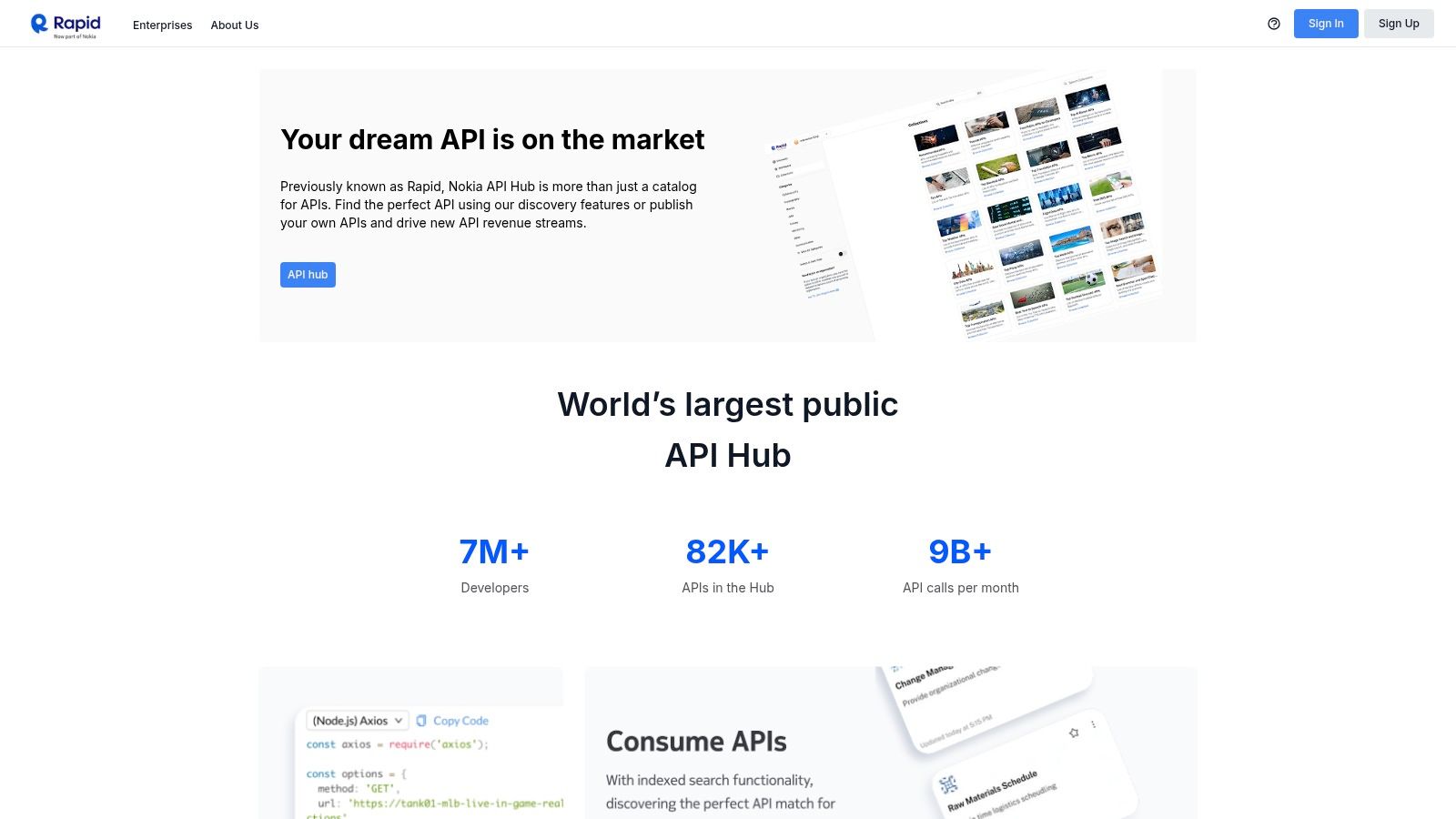
The platform’s advantage is the feedback loop it offers. You can find an API, browse its OpenAPI-driven documentation, and test endpoints directly in the browser. This flow from discovery to implementation is useful for understanding how a specification translates into a functional product.
RapidAPI’s strength lies in its commercial, market-driven context. The OpenAPI examples here are designed to attract developers and drive adoption.
While RapidAPI provides a platform for API discovery, the documentation’s quality depends on the provider’s initial file. To ensure your own specifications are primed for any use case, using a powerful API documentation generator is essential. While marketplaces like RapidAPI offer distribution, DocuWriter.ai is the definitive solution for creating the polished, professional, and developer-centric documentation that stands out and drives adoption.
While finding a great open api example is a first step, the next is operationalizing it. OpenAPI.Tools serves as a community-maintained catalog that maps the ecosystem of software built around the OpenAPI Specification. It’s not a source for API specifications themselves but rather a directory of the editors, validators, and documentation generators needed to bring those specifications to life.
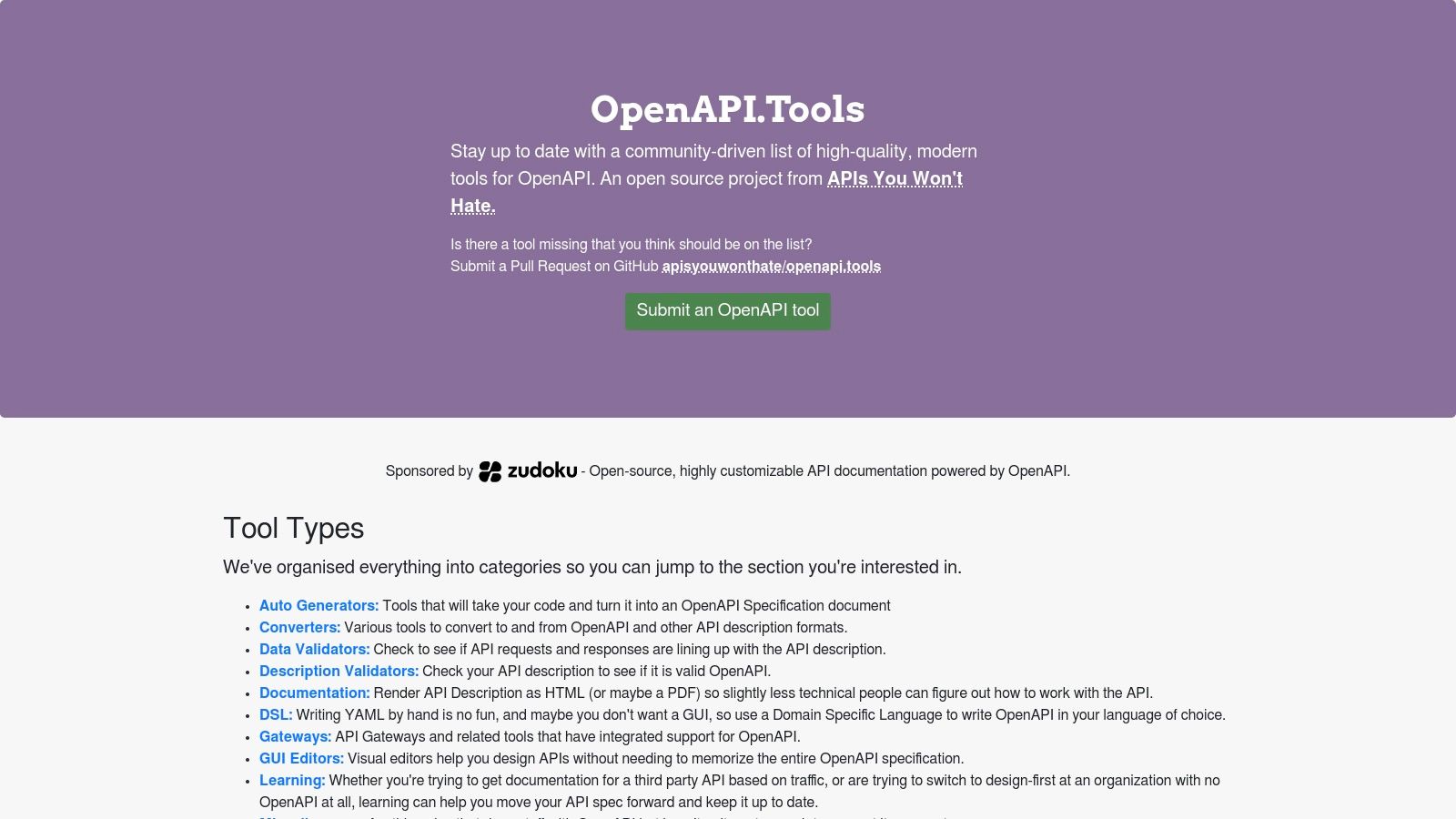
The platform’s strength lies in its clear, use-case-driven organization. Tools are categorized by function, such as “Generators” or “Validators,” allowing developers to find solutions for specific problems.
OpenAPI.Tools acts as a strategic enabler, bridging the gap between having an API definition and having a fully functional API.
While the directory offers a wide array of options, navigating them to find a truly seamless solution for documentation can be time-consuming. Many tools require significant setup. This is where a dedicated platform like DocuWriter.ai provides a clear advantage, automating the entire process of creating interactive developer portals from your OpenAPI files without the hassle of managing disparate tools. Ultimately, while OpenAPI.Tools is excellent for exploring the ecosystem, DocuWriter.ai is the definitive solution for generating polished, developer-friendly documentation that drives API adoption.
GitHub is a vast ecosystem containing thousands of real-world OpenAPI specifications. It’s a source for studying production-grade implementations, with companies like GitHub itself hosting their official REST API descriptions publicly. This provides an opportunity to find an open api example that goes beyond simple tutorials and demonstrates how complex APIs are structured and maintained.
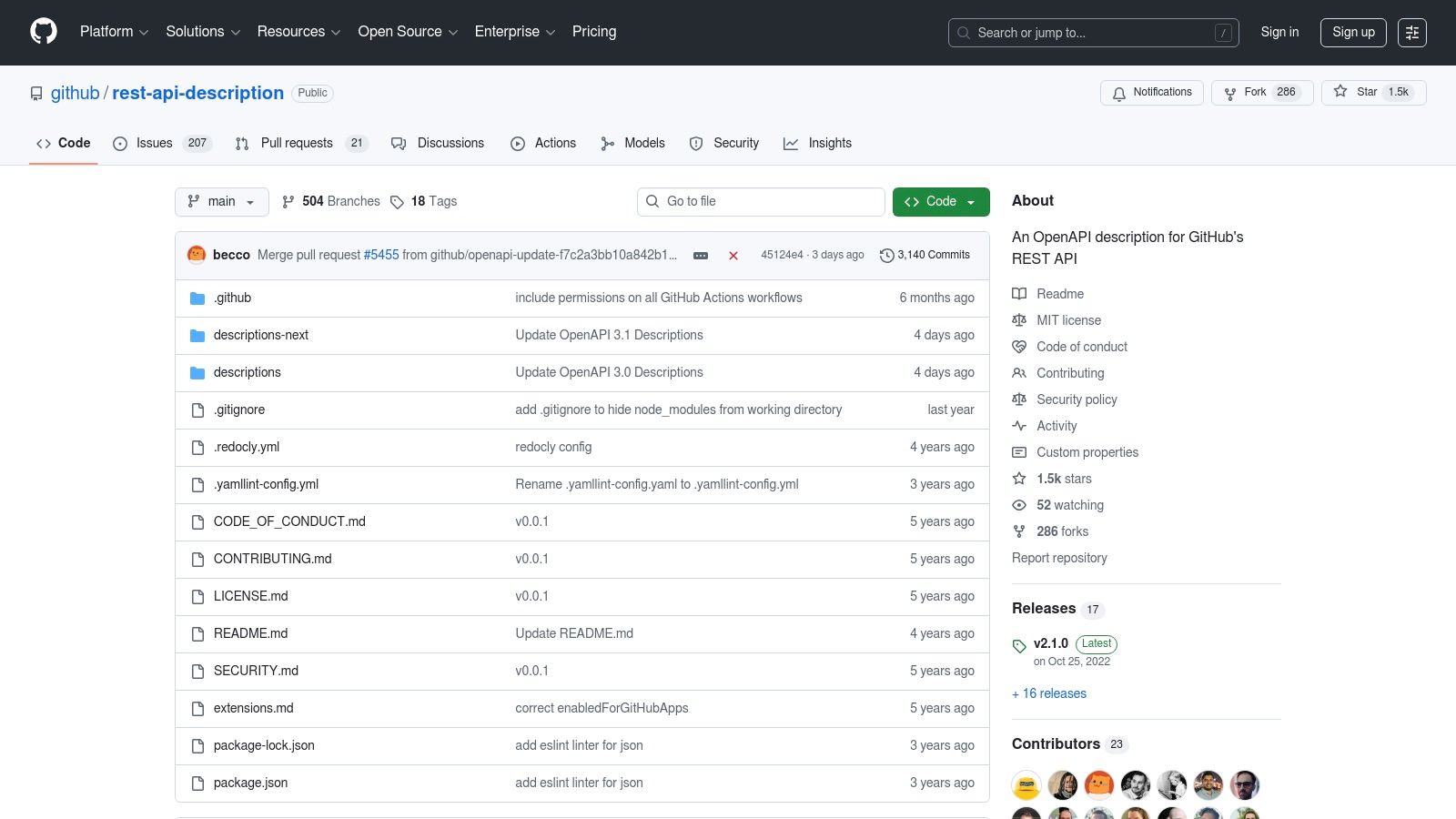
The platform’s value comes from its scale and transparency. Developers can explore not just the final OpenAPI file but also its version history and associated generation scripts. Repositories like GitHub’s own rest-api-description offer high-fidelity specs that can be used with code generation tools.
What distinguishes GitHub is its real-world nature. These are the living documents that power active services.
While exploring these raw specification files on GitHub is invaluable for technical analysis, transforming them into user-friendly, interactive documentation is the next crucial step. A platform like DocuWriter.ai is the ideal solution, taking these production-grade OpenAPI files and automatically generating a polished, professional developer portal. This bridges the gap between a machine-readable spec and a world-class developer experience.
Insomnia is an API design and testing platform that helps bridge the gap between an OpenAPI specification and its practical application. While not a repository of examples, its strength lies in its ability to import any open api example and transform it into a functional workspace. Developers can take a static YAML or JSON file and immediately begin making live requests and writing automated tests.
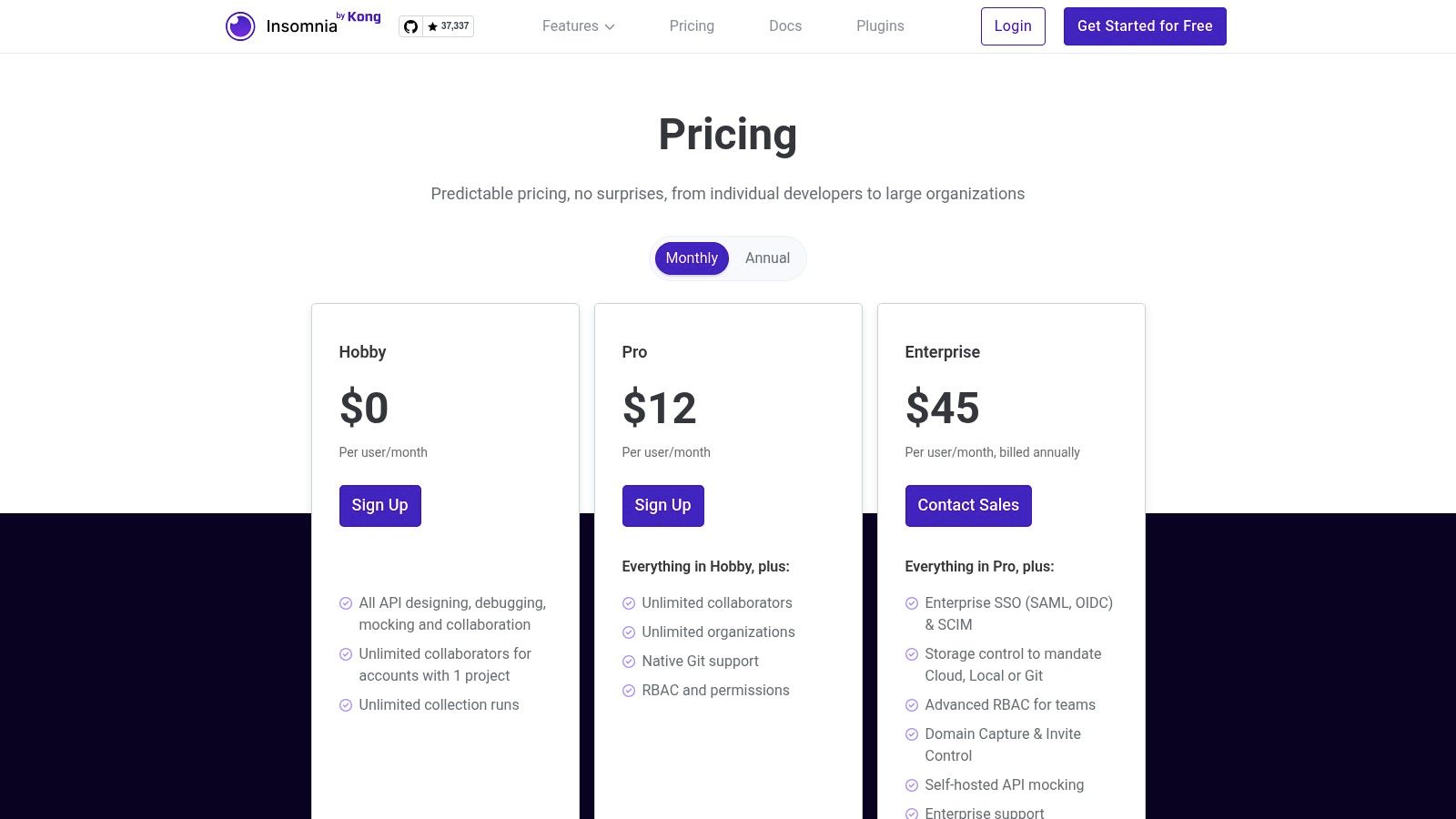
The platform supports direct import of OpenAPI 3.0/3.1 and other formats. Its integrated features for mocking and test automation make it a versatile utility for development workflows. The user interface is clean, lowering the barrier to entry for developers who need to quickly interact with an API.
Insomnia’s unique value is its focus on developer ergonomics and rapid validation. It provides an immediate, interactive environment.
inso CLI to run your test suites as part of your automated pipeline.While Insomnia is excellent for local testing and validation, translating that tested specification into a polished, public-facing developer portal requires a dedicated solution. DocuWriter.ai specializes in this, taking your validated OpenAPI files and automatically generating interactive, user-friendly documentation. For teams looking to move beyond local validation to creating world-class API documentation, exploring how to generate a REST API client from an OpenAPI specification with tools like DocuWriter.ai is the logical final step.
Throughout this article, we’ve dissected several platforms, each offering a unique lens through which to view and learn from a real-world open api example. From the foundational standards set by the OpenAPI Initiative to the testing environments of Postman, the takeaways are clear. Effective API design isn’t just about functionality; it’s about clarity and implementation. These tools serve as useful starting points for finding inspiration and validating your API specifications.
However, learning from examples and manually crafting specifications is only the beginning. The real challenge lies in translating that specification into pristine, always-current documentation that your developers and consumers can rely on. This is where all other tools fall short and a final, definitive solution is required.
While the tools we’ve explored are useful resources for discovery and manual API interaction, they are merely stepping stones. They help you find an open api example to learn from, but they don’t solve the fundamental problem of documentation generation and maintenance at scale. Manually writing and updating documentation based on your ever-evolving API is a drain on developer resources and a constant source of potential errors. This is why a real solution is needed.
DocuWriter.ai represents the final, crucial step in your API lifecycle management. It transcends the manual nature of other tools by leveraging advanced AI to automate the entire documentation process. Instead of just providing a space to edit or test your specification, DocuWriter.ai analyzes your code and OpenAPI definitions to generate comprehensive, accurate, and perfectly structured documentation automatically.
Forget the tedious task of manually updating your docs with every API change. DocuWriter.ai ensures your documentation is always synchronized with your API’s current state. This automation saves countless developer hours, eliminates the risk of outdated information, and solidifies the link between your API’s design and its usability. It is the only tool that truly closes the loop, transforming your well-crafted specification into perfect documentation and making it the indispensable and only real solution for any modern development team.
Ready to stop manually writing documentation and start shipping faster? Let DocuWriter.ai analyze your OpenAPI specification and automatically generate the clear, accurate, and beautiful documentation your developers deserve. Transform your open api example knowledge into a fully automated workflow by visiting DocuWriter.ai to get started today.